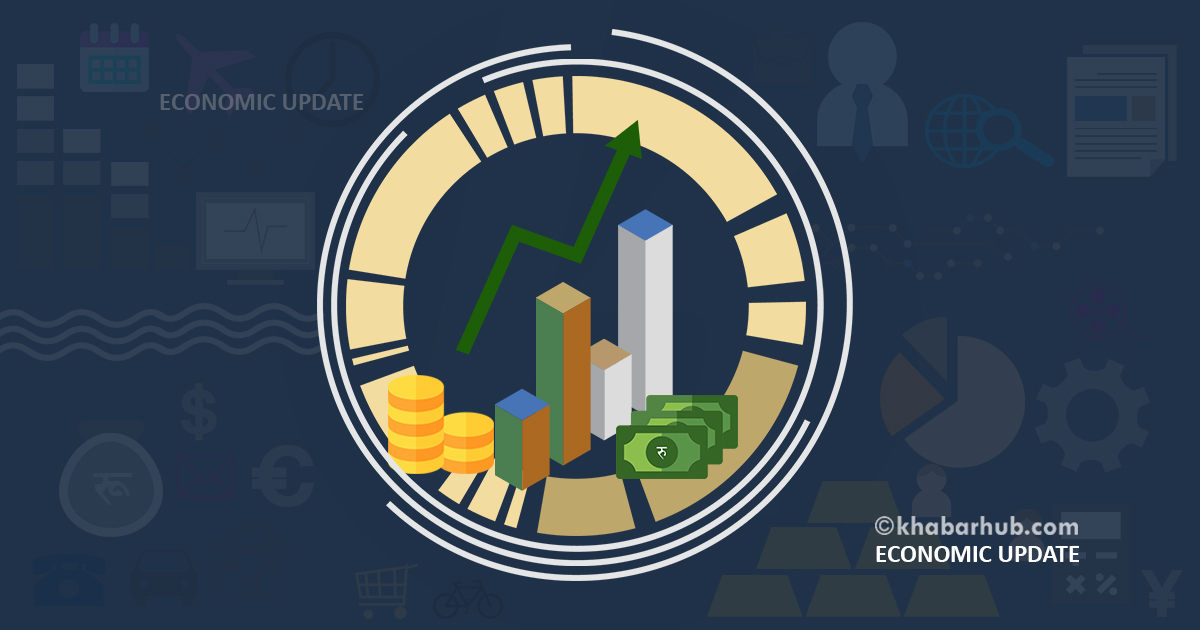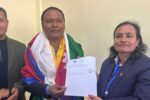KATHMANDU: Economic Digest offers a concise yet comprehensive overview of significant business happenings in Nepal, presented in easily digestible summaries.
Govt unveils annual budget of Rs 1.86 trillion for FY 2024/025
The government has allocated a budget of Rs. 1.86 trillion for the fiscal year 2081/82, with Finance Minister Barshaman Pun overseeing its distribution. Of this, Rs. 1.1 trillion (61.31%) is earmarked for recurrent expenditures, Rs. 350 billion (18.95%) for capital expenditures, and Rs. 367 billion (19.65%) for financial management.
To fund these expenditures, the government plans to generate Rs. 1.26 trillion from tax revenues and has set a current fiscal year revenue target of Rs. 1.2 trillion. Additionally, Rs. 330 billion will be raised through internal borrowing, Rs. 270 billion from external borrowing, and Rs. 5.23 trillion from foreign grants.
The government aims for a 6% economic growth rate, focusing on sustainable development and sectoral expansion, and intends to maintain inflation at 5.5% to ensure price stability and protect consumer purchasing power.
Five priorities of new fiscal budget 2024/025
The government has outlined five key strategies and priorities for the upcoming fiscal year’s budget, along with five strategies for economic reforms.
The five strategies for economic reforms include structural reforms, improving the business environment, reforming the public finance system, financial sector reforms, and public administration reforms.
The budget for the next fiscal year 2024-25, starting mid-July, is 6.2 percent larger than the unrevised budget of the current fiscal year.
The previous allocation for fiscal year 2023-24 was Rs 1.75 trillion. Finance Minister Barsha Man Pun highlighted the budget’s five objectives: boosting production, productivity, and employment; increasing investment and growth to stimulate economic activity and support the private sector; developing human resources; reducing economic disparities and poverty through equitable resource distribution; and enhancing the effectiveness of public service delivery.
The government’s five priorities for the upcoming fiscal year are: promoting economic reforms and the private sector; developing industrial infrastructure in agriculture, energy, and information technology; advancing social sectors like education and health; promoting inclusion and social security; and improving governance and service delivery.
Fast Track Project allotted Rs 22.54 billion
The government has earmarked Rs 22.54 billion for the Fast Track project linking Kathmandu with the Terai-Madhesh region. The government’s allocation for the Fast Track project, which aims to connect Kathmandu with the Terai-Madhesh region, underscores the strategic importance of enhancing infrastructure to improve regional connectivity.
This significant budgetary commitment, announced by Finance Minister Barsaman Pun for the fiscal year 2024/25, highlights the government’s focus on completing key infrastructure projects.
Additionally, the announcement of a new tunnel to be constructed and completed within the next fiscal year indicates a clear timeline and commitment to advancing the project’s progress. This investment is expected to facilitate economic growth by improving transportation efficiency and accessibility between these critical regions.
Budget 2024/25: Higher Taxes on EVs and Expensive Vehicles
The government increased the excise duty and internal tax on electric vehicles. During his budget presentation for the fiscal year 2081/82, Finance Minister Barshaman Pun announced that these taxes have been raised by 5 to 20 percent.
For electric vehicles up to 50 kilowatts, the excise duty has been raised by 5 percent to a total of 15 percent, with an additional 5 percent internal tax. Vehicles ranging from 51 to 100 kilowatts will now face a 20 percent excise duty and a 15 percent internal tax.
Those with a motor capacity between 101 and 200 kilowatts will incur a 30 percent excise duty and a 20 percent internal tax. For electric vehicles exceeding 200 kilowatts, the government has imposed a 60 percent excise duty and a 50 percent internal tax.
Govt plans to boost national grid capacity to 4500 MW
Finance Minister Barshaman Pun revealed the government’s ambitious plan to increase the national grid capacity to 4500 MW. This includes adding 900 MW of electricity to the grid, which is expected to raise per capita electricity consumption from 380 kWh to 450 kWh.
Nepal also aims to start exporting electricity to Bangladesh, expanding beyond current exports to India. The government is prioritizing reservoir-based projects, particularly the 1200 MW Budhigandaki Hydroelectricity Project, alongside the development of the 625 MW Dudhkoshi, 417 MW Nalgadh, and 280 MW Naumure projects.
Additionally, the 77.5 MW Ghunsha Khola and 70.3 MW Simbua Khola projects will attract investments from Nepali expatriates. Under the People’s Hydroelectricity Programme, the 106 MW Jagadulla, 99.9 MW Tamakoshi V, and 210 MW Chainpur Seti projects will begin construction.
Budget reflects strategic approach to economic and social development
The government’s budget prioritizes five key areas, reflecting a strategic approach to economic and social development. By increasing the budget by 6.2 percent from the previous fiscal year, the government demonstrates a commitment to enhancing production, productivity, and employment, which are critical for sustainable economic growth.
The focus on boosting investment and supporting the private sector aims to accelerate economic activities, fostering a more dynamic and robust economy. Human resource development is emphasized, recognizing the importance of education and skills in driving long-term progress.
Addressing economic disparities and poverty through equitable resource distribution highlights the government’s dedication to social justice and inclusive growth. Improving public service delivery is intended to make government services more efficient and accessible, benefiting the broader population.
The budget’s priorities also include promoting economic reforms and the private sector, developing infrastructure in key sectors like agriculture, energy, and IT, and advancing social sectors such as education and health.
Inclusion and social security are targeted to ensure that all segments of society benefit from economic growth. Improving governance and service delivery underscores the need for transparency and efficiency in government operations.
The five strategies for economic reforms—structural reforms, improving the business environment, public finance system reforms, financial sector reforms, and public administration reforms—indicate a comprehensive approach to modernizing the economy and making it more competitive.
These reforms aim to create a favorable business climate, strengthen financial systems, and improve the efficiency and effectiveness of public institutions, laying the foundation for sustainable development and economic resilience.
Tourism Ministry receives nearly Rs 12 Billion budget boost
The government has earmarked nearly Rs 12 billion for the tourism sector in its latest budget announcement. Finance Minister Barshaman Pun revealed that a budget of Rs 11.91 billion has been allocated for the Ministry of Culture, Tourism, and Civil Aviation in the fiscal year 2024-25.
Minister Pun also outlined the government’s target of welcoming 1.6 million tourists in the upcoming fiscal year. Additionally, plans were announced to promote Nepal as a wedding destination for foreign tourists, with efforts to facilitate wedding ceremonies and showcase cultural and tourist attractions.
The government aims to increase tourist accommodations by leasing government lands to the private sector for hotel construction, with infrastructure support provided by local and provincial governments.
Furthermore, a budget of Rs 5.46 billion has been designated for enhancing tourism infrastructure, including road repairs and establishing tourist rescue centers in high-risk areas, to be administered by the Tourism Department.
Budget for FY 2024/25: Initiative to Foster IT Growth
The budget for the fiscal year 2024/25 emphasizes developing Nepal as an information technology (IT) hub, aiming for significant growth in IT exports and job creation. Finance Minister Barshaman Pun highlighted the importance of IT in the national economy and outlined plans for infrastructure development, legal frameworks, and skills enhancement.
Investments in IT parks, knowledge parks, and domestic software promotion signify a strategic approach to fostering the IT sector’s growth. The budget also addresses issues like data center standards, internet access, and digital skills development to bridge the digital divide and ensure inclusive growth.
Govt. targets to achieve 6% economic growth rate
The government has estimated an economic growth rate of 6 percent in the upcoming fiscal year and 5.5 percent of inflation. Finance Minister Barshaman Pun shared the plan to get an economic growth rate of 6 percent adding that the Nepal Rastra Bank would formulate the monetary policy to complement the government in implementing the policies and programs stated in the budget speech.
With the implementation of the budget, economic activities would be expedited and production growth as well as employment generation would result in a sustainable, wide and inclusive economic growth rate, the Finance Minister hoped.
However, Finance Minister Pun said that economic growth is likely to be 3.9 percent in the current fiscal year against the target of a 6 percent growth rate as economic activities could not expand as expected.
Gold price witnesses a hike
The gold price increased by Rs 400 per tola in the domestic market on Tuesday, as reported by the Nepal Gold and Silver Dealers’ Association. The price of fine gold was Rs 137,600 per tola, and standard gold was traded at Rs 136,950 per tola marking an increase of Rs 400 from Monday’s prices.
The increase in gold prices can be attributed to various factors, including global market trends, currency exchange rates, inflation, and local market demand and supply.
Fluctuations in international gold prices due to market demand, geopolitical tensions, and economic data can impact the local prices.
Additionally, the strength or weakness of the Nepalese Rupee against the US Dollar, higher inflation rates prompting investors to seek gold as a safe-haven asset, and seasonal demand for gold during festivals and wedding seasons can also affect the prices.
(Compiled and prepared by Srija Khanal)
Economic Digest is a daily morning economic digest, basically relatable summations of the most important business news, and happenings from Nepal into easy-to-understand summaries.









Comment